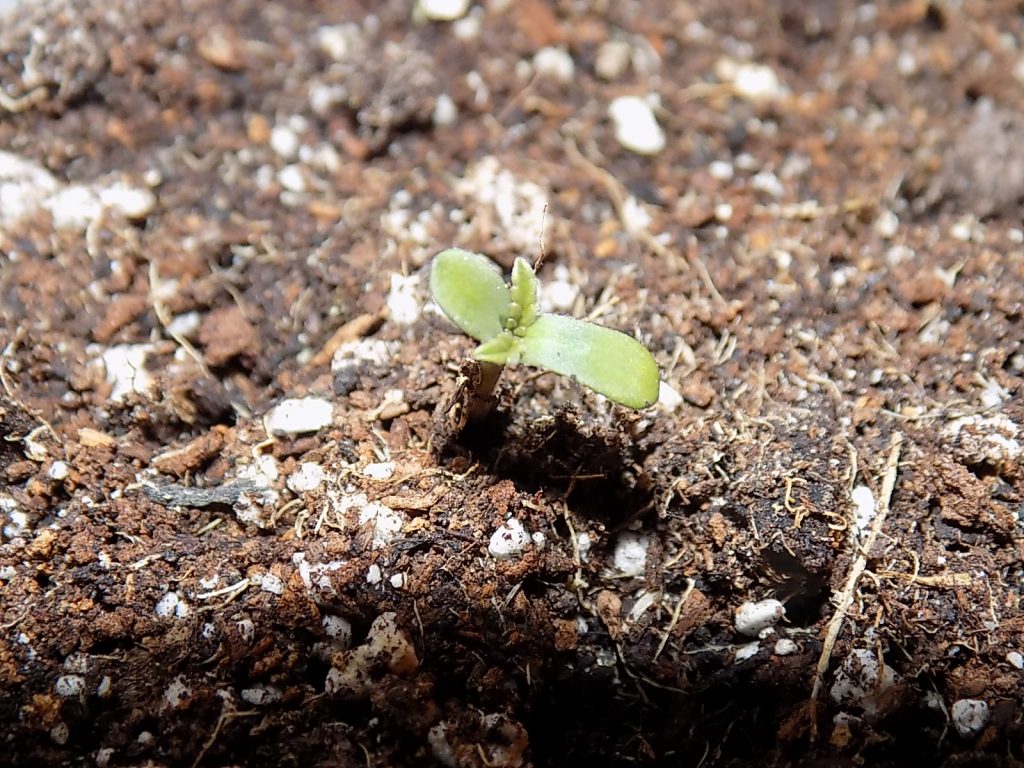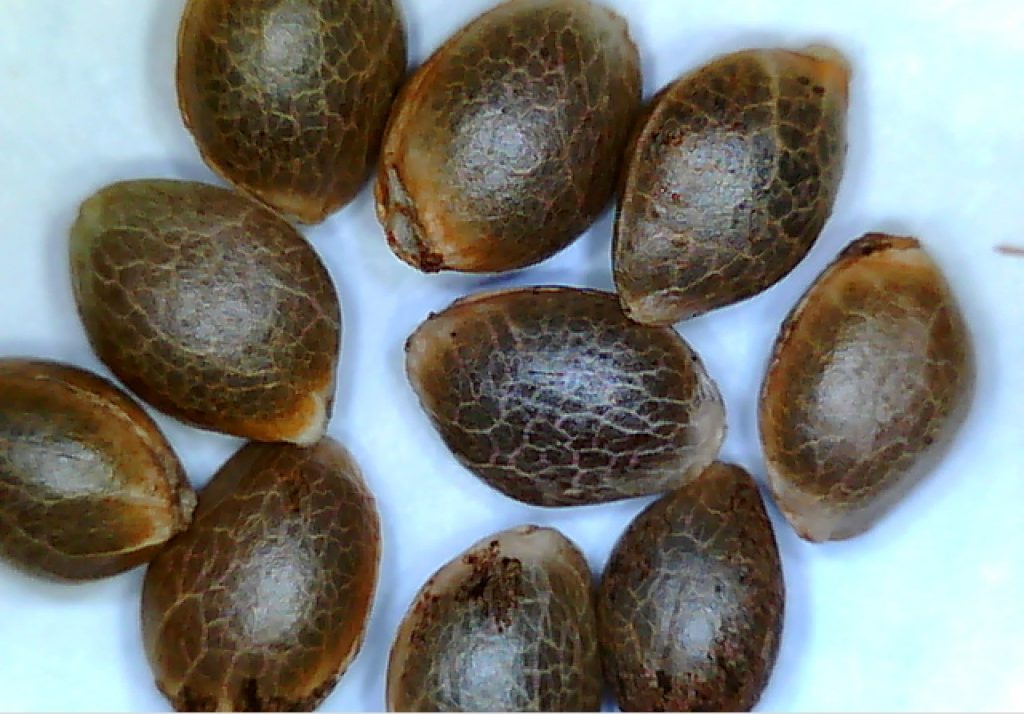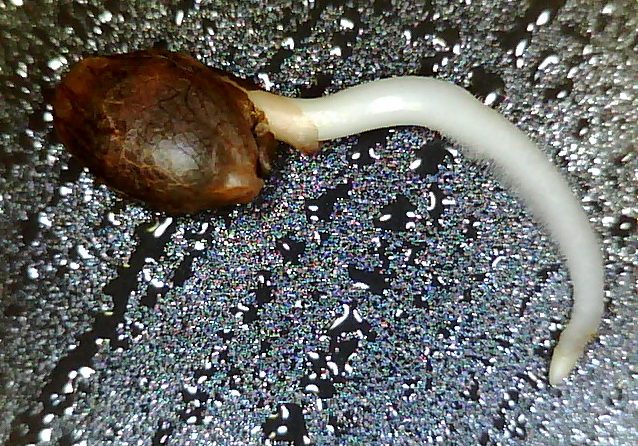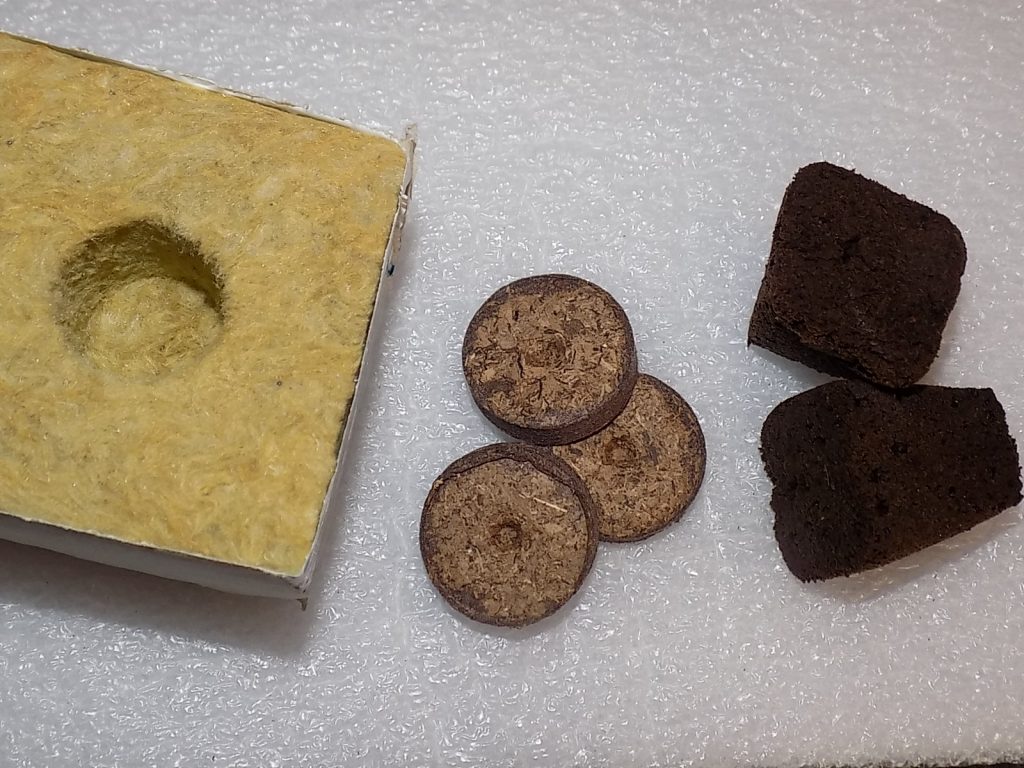Seeds. Such a gift to this world. From something so small, may we grow ourselves, our own food, shelter and in our case, medicine! So really, it seems only fitting we give them the best odds at a successful start in life. In this post, our collaborator Light Addict explains how to germinate cannabis seeds in order to be successful.

Having said this, let's look at how compost inoculant teas can be used to help nullify the risk of unwanted bacteria and pathogens encountered once the cannabis germination/planting process has begun. This is managed through the introduction of beneficial bacteria and mycorrhizal fungi to the process via compost teas used for either pre-soaking your plugs, cubes, potting medium etc. or drenches to the media shortly after germination. These beneficial bacteria and mycorrhizal fungi colonize the rootzone creating a symbiotic relationship with your cannabis plant roots, leading to improved levels of nutrient/water uptake, general plant health and resistance to stresses.
Environment
Now a cannabis seed only needs 3 simple requirements to germinate:
- moisture
- warmth
- darkness
So why are there so many different methods bandied about? Simply put, there are lots of different ways to give your cannabis seeds these 3 basic environmental requirements. So, within these simple basic provisions, what are the best ranges to promote a successful germination of your cannabis seeds? With moisture: you're looking for a medium level of dampness, never soaking, (water method not inclusive). Temperature wise: you're seeking to provide a range somewhere in the vicinity 23-26C/75-80F. Then lastly, darkness; total light deprivation isn't truly a requirement. However, as it's so simple to provide, it's the option most of us choose. With all 3 of the above requirements, maintaining consistent levels can also aid in success.
Methods to germinate cannabis seeds
Paper towel
One of the oldest, most widely-known methods to germinate cannabis seeds for small-scale growers is the paper towel method. Using some folded up paper towel, we create a bedding layer for the seeds. Place this bedding layer inside an opaque container of suitable size, then dampen it with water via a spray bottle. Place your seeds on top, before covering with more paper and spraying once again with water. Close your container up and then place it somewhere warm to await germination. Once the tap roots have shown, simply plant it in chosen medium.

Water soak
For simplicity, methods don't come much easier than this, although again it's only really suited for the small-scale grower. Drop your seeds into a shot glass, then fill it around 3-quarters with water, before placing your glass in a warm, dark area. You may need to return after a couple of hours, just to tap any remaining seeds that are still floating down to the bottom. Wait once more until the tap root has shown, before planting it to medium. However, please keep this in mind: if germination hasn't begun within 36 hours, I'd recommend removing the seeds from water and placing them in paper towel to prevent your seeds drowning.

Seed plugs, rockwool cubes and peat pellets
These 3 different starting mediums share the same basic process when it comes to actual seed germination and are all suitable for any size of operation, although some require a little more care and caution when being prepared.

PLUGS
Versatility here is key, as they're suitable for use with any medium or style of growing utilized further along in the growth process. Root plugs are specifically designed to make the germination process simple and successful, being made of a composition that holds moisture levels within an ideally suited range. Another big plus when it comes to root plugs is that generally they're made from composted and broken down organic materials. Yet please, check your chosen brand ingredients for yourself. Take your seed and insert into the plug's hole. Tear a small section of the plug away from a corner or the bottom section and stuff this into the hole to cover the seed. Then place your plugs into your germination space or propagator, using a constant light source and again remembering to keep an eye on moisture levels as you await germination.
CUBES
CAUTION. Rockwool is a hazardous material. Somewhat like fiberglass, its dust can be breathed in, yet not expelled from the lungs. It also happens to be an irritant. So, both gloves and a face mask should be used when handling it. Rockwool is an inert medium, suitable for all general growing practices. This means, soaking your cubes in pH-adjusted water prior to use is a necessity. Once soaked and let drain, drop your seed into the hole, then tear a corner section off your cube and use it to cover the seed up from the light. Then place your cubes in your propagator under your chosen light source and wait.
PELLETS
Peat pellets are quite similar in appearance and design to the plugs once expanded. One major issue with peat pellets is that peat is not a sustainable source of material, or an eco-friendly one. Peat pellets come dried out, making pre-soaking them necessary. Once ready, they'll have expanded to over double their original size. Then just make your own little insertion into the top of the pellet, before dropping your seed in and then covering over with another section you've torn off your pellet.
Seed, straight to medium
Take your desired pot of media and water an hour beforehand (pH'd, if required, as with soilless). Make a small hole, 0.5-0.75 of an inch is a good depth, then place your seed in and cover over. Finally, place your pot under your light source and wait. As with the other methods, keep an eye on your moisture levels as required. Although we strive to keep moisture levels at a constant, please remember that overwatering the medium can sometimes cause failure of germination. Then take into consideration the feeding requirements for new seedlings: no nutrients are needed in the first week or so of a seedling's life, even if using an inert medium such as Coco or Rockwool. This is because the seed will be using its own stores of energy up.





Cyrptonight might have turned perple from the environmental conditions. If the plant is exposed to cold temp it will turn purple. This is cause by a phosphorus deficiency ;)
I've tried all ways, now I only sprout in dirt"medium", trick for proper moisture is to use a misting sprayer on top so as not to dig up soil.
This is great info and thank you HSO for taking time to put this info out there. I purchased Cryptonite seeds last fall in sealed seed pack and soaked the seeds for 24 hours and most started to crack so at that time I put them directly into root riot plugs and every seed I planted grew so great job on having good viable seeds love your products. Only issue I have is all have produced purple to dark purple flowers which is not consistent with the strain??? I have attempted to contact your company several times and even received responses saying they would get back to me, but NOBODY has given me a hint as to why this has happened, is it possible for Cryptonite to produce purple buds? Did I get miss packaged seeds? Whatever it is it’s great genetics but could someone please help me sort out what’s going on??
Hi there! First of all, thanks for the comment! We are happy to see that our posts are useful for you guys. Regarding to your Cryptonite issue, we are sorry to tell you that’s not a strain of ours, so we cannot help you with that ;)
Shake em in a pill bottle with a lil piece of sand paper.